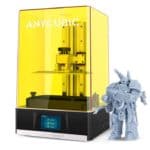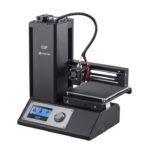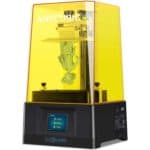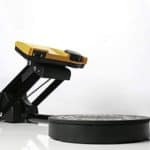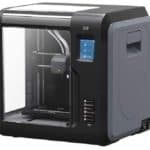Best Home 3D Printer
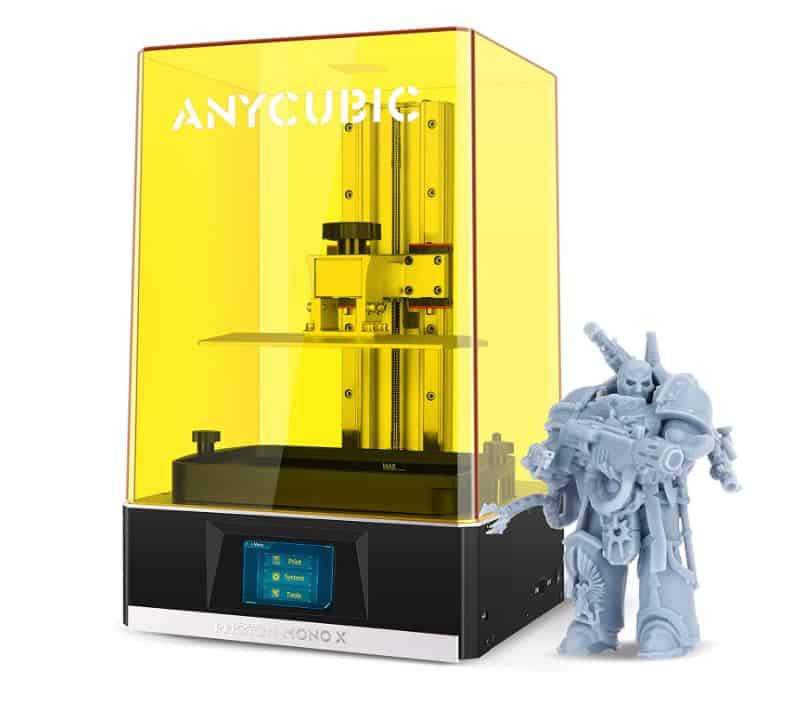
3D printers are now more popular than ever, and their availability for home use opens up whole new possibilities for those passionate about handmade goods – especially as 3D printing technology continues to improve. The print quality of 3D printers has improved so much that the prints you can create from your own home look like they were made by a professional 3D printing service!
But what 3D printers are the best for use at home? Below, you’ll find five 3D printers that are ideal for beginners who want to start printing, as well as those who just want to update their current 3D printing setup. You’ll also find answers to frequently asked questions, as well as a buyer’s guide that covers everything from what materials to use, to why supports are your friend.
Products at a Glance
Best Home 3D Printer
- The heated build plate and wide range of extruder temperatures allows you to work with any type of filament
- Compact desktop design
- Comes fully assembled
- Also comes with MicroSDTM card with preinstalled models
- Small sample roll of filament
A great printer for beginners, the Monoprice Select Mini V2 is full of features and has excellent printing quality despite its low price. Make sure to stock up on filament though, as you may go through the sample roll fairly quickly.
- Great for making professional-looking board game miniatures
- Offline printing function
- Printing speed is x2.5 faster than other 3D printers
- Uniform exposure
- Requires the use of liquid resin
If you’re after a resin printer, then the Anycubic Photon could be the one for you! Resin printers are an exciting evolution in rapid prototyping design technology that makes prints look as though they’ve just come off a factory floor. This model is extremely popular with board game hobbyists who want to print professional-looking miniatures. Just be warned that liquid resin is hard to work with.
- Rotating base and built-in camera
- Alerts via sound or text to keep you updated on the printing process
- Easy assembly
- White light technology and laser triangulation allows the scanner to reach a resolution of 0.1 mm
- Difficulty scanning black and white objects
You can recreate pretty much anything by putting it on this 3D scanner, thanks to the rotating base and built-in camera that creates a 360-degree copy that you can edit in any 3D program and print on your 3D printer. All you need to do is scan the object, import the scan into your slicing software for cleanup, and then print. The included software even alerts you of the next steps in the printing process, either via sound alerts or texts. Besides these exciting features, the scan quality and print resolution are superb, and it’s easy to set up.
- Quick change nozzle
- Removable, flexible build plate
- Ready to use out of the box
- Built-in sensor detects if filament is low
- Poor online instruction manual
The features of the Monoprice Voxel 3D printer make it a breeze to use. Its quick-change nozzle lets you change the nozzle in seconds, while nozzles on most 3D printers usually take around 30-40 minutes to change. The removable, flexible build plate makes removing a model simple too. All you need to do is remove and flex the plate to dislodge the model. The printer is also ready to use straight out of the box thanks to auto-leveling, while auto-feeding makes loading filament easy as well. Just insert your filament into the printer’s filament loading port, then tap ‘load filament’ on the touchscreen menu. The built-in sensor also detects low filament levels and will pause prints in progress for the filament to be loaded.
Buyer’s Guide
While 3D printing has come far enough that you can now print truly amazing stuff at home, it’s still not as easy as hitting print and then sitting back and waiting for your creations to come to life (not literally though, that would be weird). There are materials to buy, and a few extra steps to take into consideration as well.
Below, you’ll find all the information you’ll need on what materials to use, what printer settings to use, and what exactly supports are for. Our FAQ section also answers some common questions asked by beginners who want to start 3D printing at home.
Materials to use
While professional printers use all kinds of materials such as metal or organic filament, most home 3D printers use PLA or ABS plastic, or even liquid resin. The latter is much more difficult to handle, however. If you’re a beginner, we recommend using PLA. It’s made mainly of cornstarch and sugarcane so is non-toxic, as well as being easy to handle, and cheap. However, it is sensitive to heat, so be careful where you put your 3D prints on hot days!
As for what brand of PLA you should use, we recommend Hatchbox. You can buy a full 1kg spool on Amazon for about $20, but it’s worth noting that some printers only accommodate narrower spools of 0.5 kg. In this case, you can use a larger Hatchbox roll with a separate spool-holder. We also recommend AIO Robotics 0.5 kg spools, however, these are more expensive at $14 for 0.5kg, and a 1kg roll lets you print a lot.
Most prints tend to look better in plain white if you’re going for a simple look and don’t want to prime or paint them. If you do want to add some color, primary colors are the best to use as they stand out more and are just easier to use overall. Of course, you can always experiment with colors, but more varied or metallic colors may not achieve the effect you want and can look quite brittle or patchy.
3D Printer Settings
Most 3D printers include or link to recommended software that can convert 3D STL or other files into formats supported by the printer. But while we do recommend sticking with the suggested presets to start, there is an exception to this rule. Adding a raft, or bottom layer of filament can cut down dramatically on prints that don’t properly adhere to the bed. This is a common problem. If you continue to have problems, however, rub a standard glue stick on the bed right before printing.
Supports
As 3D printers tend to not cope very well with big overhangs (like an arm sticking out from a figure for example), your 3D models may need a little bit of help to print properly. However, your 3D printer software can usually calculate and add supports automatically. These are little stands that hold up all those parts of the model that stick out. Once the print is finished, clip the supports off with micro cutters and file down any nubs or rough edges with hobby files.
What exactly can you do with a 3D Printer?
3D printers continue to advance – who knows where they will be in a few years! As for right now though, you can create small objects made of plastic using a 3D printer. As we have mentioned in our buyer’s guide, most printers print objects in a single color – usually white that you can paint over.
How expensive are 3D Printers?
As 3D printers become more popular and suitable for home use, their price has reduced significantly. They used to cost thousands of dollars, but now you can get Amazon’s current best-selling 3D printer for around $500. 3D printers from bigger brands will probably cost a lot more though.
Where do you find things to print?
One of the biggest online resources for 3D files is Thingiverse.com. They have everything from Pokemon chess sets to DIY Lego-inspired blocks! We recommend sites like Thingiverse.com for beginners, as using pre-designed 3D files is a great way to start your 3D printing journey. When you’re ready to create your own designs, however, there are plenty of software packages to choose from, but we recommend the browser-based TinkerCad app from Autodesk as it is not only free but easy to use.
Our Verdict
